Merchant – Banker – Shipowner – Pastoralist – Gentleman
by R.W. Rathbone
Alexander Brodie Spark as born on 9th August, 1792 in Elgin, Morayshire, Scotland, the third child of George Spark, a watchmaker and goldsmith and his wife Mary Gordon. He was educated at the local academy where he showed signs of literary talent and after working for his father for some time, left Scotland at the age of 18 and travelled by sea to London
There he was employed as a clerk in the counting house of Ted and Spencer and in his spare time, he and another Elgin youth, Isaac Ketchen, founded a weekly Literary Society “for reading, conversation and mutual improvement”.
Spark did well in London and became a committeeman of the London Morayshire Club. Despite his serious and somewhat unbending disposition, he led a very full social life. He toured England widely, patronised literary functions, exhibitions of fine arts, art galleries and the like and was a frequent theatre and opera goer. He wrote poetry and prose but his literary style was so stilted that nothing of it now survives. He read extensively.
In 1816, he returned for a time to Scotland. Back in London, he gave lavish dinners, dressed pretentiously and gambled passionately. Letters from his father complained of his wasteful living and by April, 1817 he was heavily in debt. A month later he was dismissed by his employers. He was still unemployed in 1818 when his father died and left him a substantial legacy.
No doubt on the strength of his windfall, he undertook a Grand Tour of Europe which was later to have repercussions in Australia. During this tour he visited Italy and met the poet William Wordsworth. He also toured Greece and visited Mount Olympus and the Vale of Tempe.
In August, 1822 at the age of 30, Spark converted his remaining capital into saleable goods and applied to the Colonial Secretary Earl Bathurst for passage to Australia under one of Governor Bourke’s immigration schemes.
He arrived in Tasmania aboard the “Princess Charlotte” on 21st January, 1823 after a voyage lasting five months but was not impressed with his prospects there and re-boarded the ship to disembark at Sydney on 17th February.
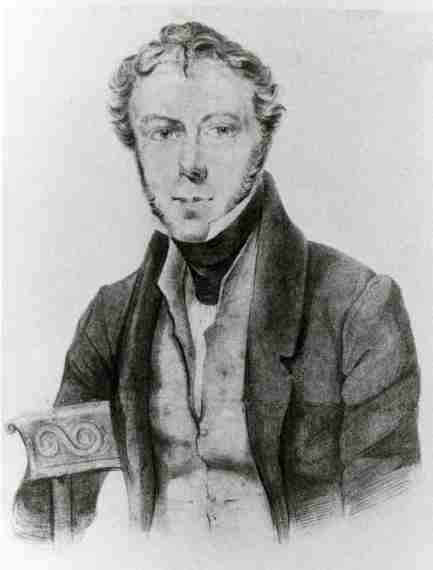
Ten days later he opened a store in hired premises in George Street, with a bewildering array of domestic articles for sale. Later in 1823 he tendered to supply the government stores with salted pork. These ventures prospered and by 1824 he had moved into larger premises and was receiving regular shipments of goods from England. He was also a partner in a ship sailing between Sydney and Hobart. Two years later he exported his first shipment of wool to London aboard the brig “Macquarie”.
By 1826 Spark had acquired a substantial holding in the Bank of N.S.W. and was Secretary of the Sydney Chamber of Commerce. The same year he became a Director of the Bank of Australia rising 1833 to be its Managing Director, Deputy Chairman and second largest shareholder.
In February 1827 he was elected Secretary of the Agricultural Society and in May was made a Magistrate and a Justice of the Peace. He was most active in the setting up of the Australian Subscription Library, was a member of its committee and donated liberally to its book stocks. He was one of the founders of the Hunter River Steam Packet Company which operated the famous “Sophia Jane” and “William IV”.
He was, in short, a man of enterprise, wealth and influence and everything he touched seemed to turn to money.
As well as being a merchant, banker and shipowner, he was also a large landowner. At the time of the 1828 Census, A.B. Spark, Merchant of George Street was the owner of over 6,400 acres of land in various parts of the Colony. Six thousand acres of this was in the Hunter Valley where Spark employed a man named Benjamin Hall, father of the bushranger, Ben Hall, to oversee it.
Another 110 acres of this land was the area formerly known as Packer’s Farm on the southern bank of Cook’s River. This he had purchased in 1827.
Spark called the estate “Tempe” after the Vale of Tempe in Greece and the rocky prominence on the eastern boundary, he named Mount Olympus. He erected on the land a small sandstone cottage but left the administration of the estate to his overseers Patrick Crannon and Edward Owen and 13 convict assignees.
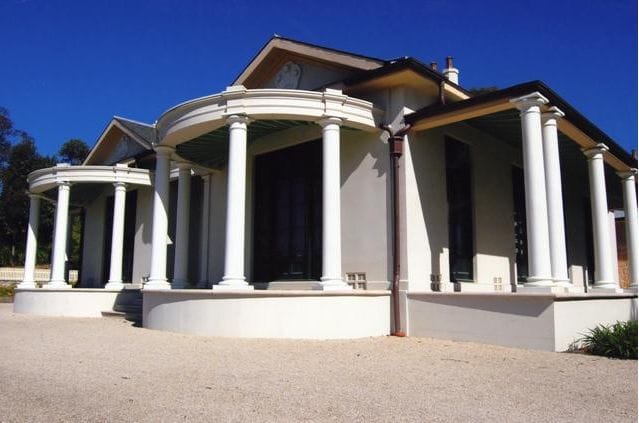
So much did Spark enjoy his sojourns at “Tempe” that he began to entertain there. The small cottage proved inadequate for his needs and in 1834 he commissioned the architect, John Verge, then working on a much grander house for him at Woolloomooloo (now Potts Point) to design for him an arcadian villa with strong resemblances to a Greek Temple. This building was completed early in 1836 and Spark decided to make it his permanent home leasing the Woolloomooloo house “Tusculum” to the Anglican Bishop of Australia, Bishop Broughton. In his first year of residence at “Tempe”, Spark entertained over 500 visitors.
The traveller, R.G. Jameson, who visited the house in 1839 described it thus –
‘In front of the mansion, a lawn, tastefully and ornately laid out sloped gently down to the edge of the river, across which the visitors were ferried in boats. The mansion itself, a large cottage ornee, with an exterior verandah and colonnades and snow white walls, constituted the chief ornament of a very pleasing landscape and presented a lively contrast with the variegated and umbrageous foliage of the garden … the apartments were richly and elegantly furnished. There was a library and an aviary and the walls were hung with Flemish and Italian paintings.
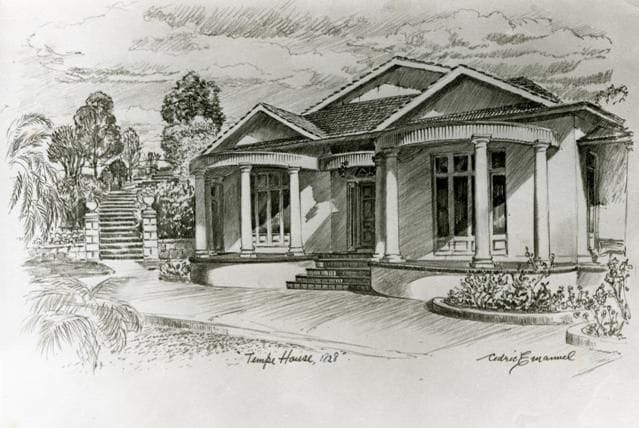
Many and varied were the guests which Spark received at “Tempe” including on 6th July, 1839, Lady Franklin, wife of the Governor of Tasmania.
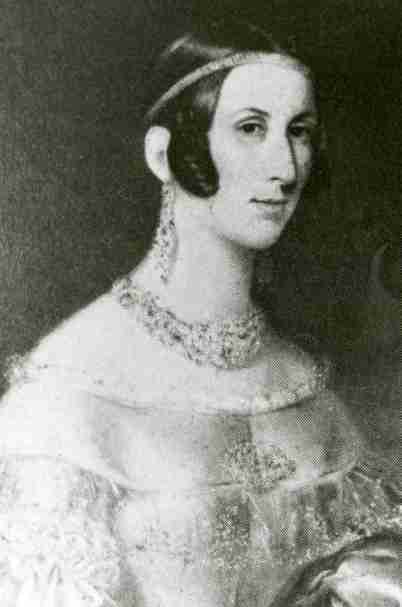
In April 1840, Spark, now 48 and often referred to as ‘the Old Bachelor” announced his intention of marrying 30-year-old Mrs Frances Maria Radford nee Biddulph, widow of Surgeon Henry Wyatt Radford. It is reported that his letter of proposal reads more like a business proposition but the widowed lady accepted overtures the same afternoon and sealed the arrangement by dropping her former husband’s wedding ring from the Cook’s River Dam into the river.
They were married later that month in St. Peter’s Church of England, Cook’s River, the erection of which had been largely due to Spark’s generosity in 1836. There were six children of the marriage, Alexander, Frances Maria Ann, Mary Gordon, Edith Burnett, Stanley Herbert and Florence Sophia.
Together with the three surviving children of Mrs Spark’s first marriage (2 had died of cholera, 2 were drowned at sea and 1 had been burnt to death), they all lived together at “Tempe”.
The idyll of the rich merchant family man was to last only a sort while. In the late 1830’s and early 1840’s a property boom had occurred in N.S.W. and Spark had extended his credit to take advantage of it. This bubble burst and together with declining prices for wool and live-stock and prolonged drought conditions, he found himself unable to meet his commitments.
Late in 1841 rumours began to circulate that Spark was in difficulties and eighteen months later the Bank of Australia, in which he was still a large shareholder, crashed. In 1843, on his on petition, he was declared bankrupt although he continued in the shipping business having an interest at this time in no less than 18 ships. He also retained for a time his position as Treasurer of the Australian Gas Light Company.
Throughout 1844 and 1845 he was involved in one court case after another as his creditors tried to recover their debts and he began to suffer chronic ill-health. He never recovered his place in Sydney’s business community but remained a prominent Anglican layman and a Patron of the Arts.
In 1852 he received a small legacy of pounds £700 from the estate of his brother Colonel Robert Spark, but the following year, one of his creditors, the Australian Trust Company, insisted on offering “Tempe” for sale. Although valued at pounds £8,000 the best offer they could got was £7,000 and so the sale fell through enabling Spark to remain on as a tenant in the house he loved so much and surrounded by the family to which he was devoted.

But time was running out for the former merchant, banker, broker, company director, pastoralist and shipping magnate and on 21st October, 1856, at “Tempe”, Alexander Brodie Spark passed peacefully to his rest. He was 64.
The once prominent member of Sydney’s commercial establishment received no obituary notices and lies buried in the overgrown, and neglected graveyard of St. Peter’s Church, Cook’s River.
This article was first published in the June 1981 edition of our magazine.
Browse the magazine archive.
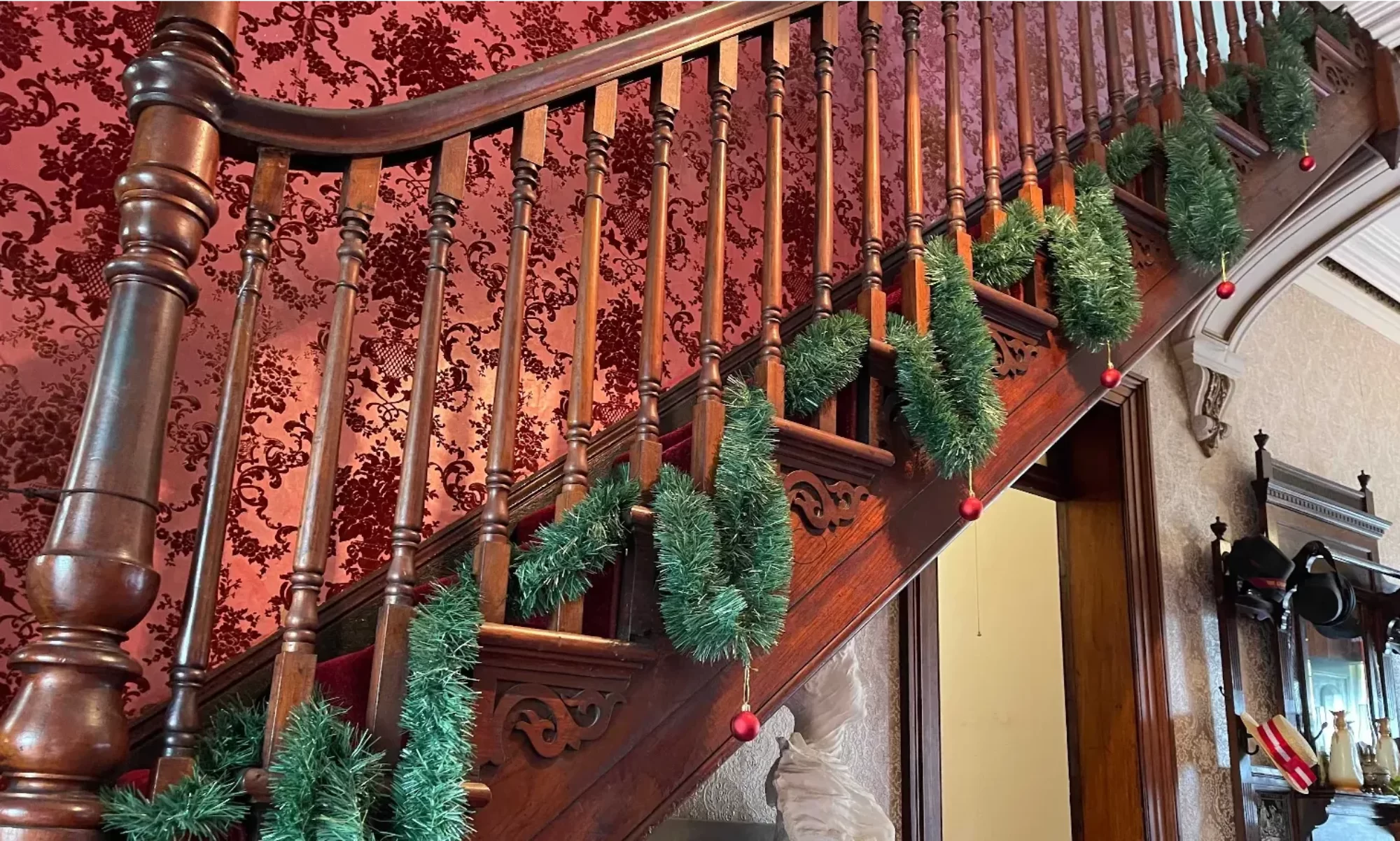

The drawing of Tempe House by Cedric Emanuel is dated 1828. How can this be reconciled with the text above that Spark commissioned Verge in 1834 and the villa was completed in 1836?
Hi Peter,
Thank you for your query.
The handwritten date is 1928, the year Cedric sketched this artwork.